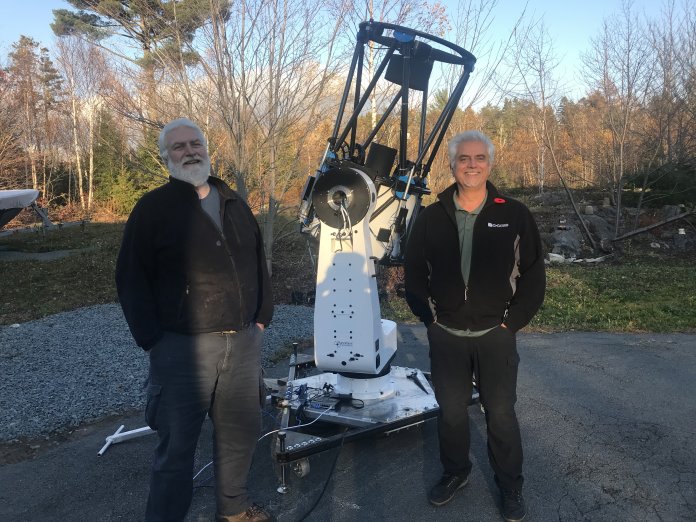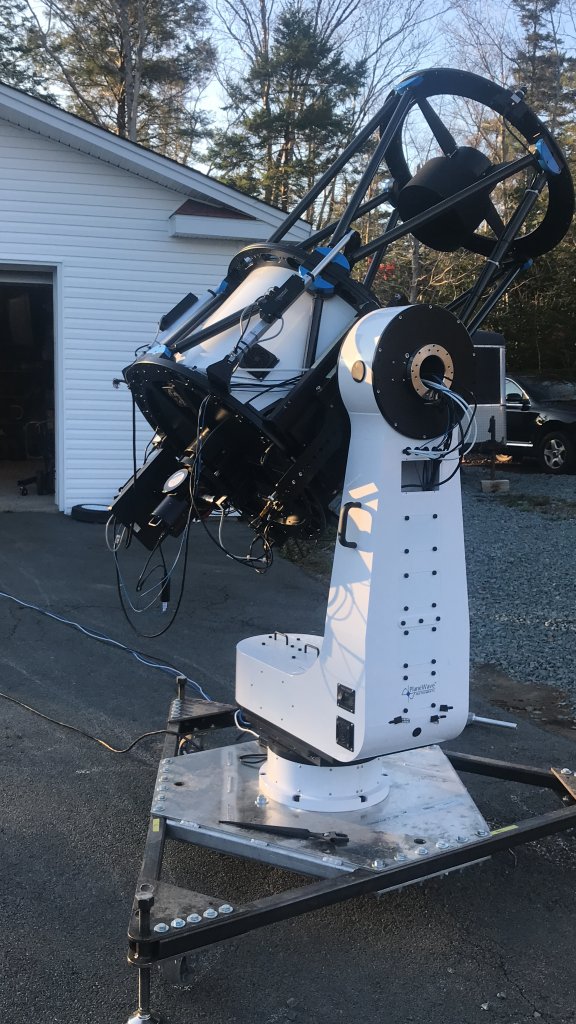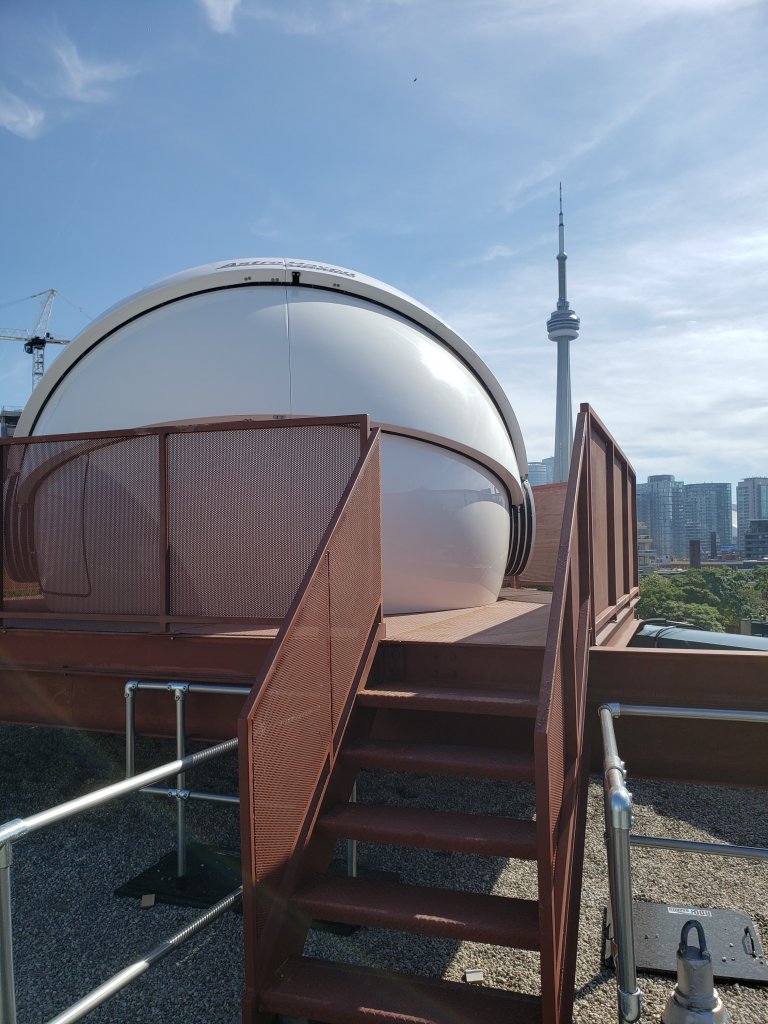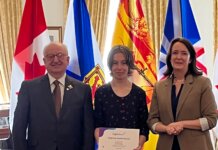
FALL RIVER: Situated inside the garage of Bob Allan’s Fall River home is something that is about to play an important role in receiving data as it relates to the earth.
Allan and Paul Adlakha, with C-CORE, have built an Optical Ground Station for remote sensing satellites, which is set to be shipped off to Toronto this week. To many it looks like just an overly large telescope. For Allan and Adlakha it’s more than that.
“C-CORE has a project with Sinclair Interplanetary out of Toronto, they’re building space segments,” said Adlakha. “They put their laser technology on satellites and beam down the sensor data. We’re building the ground segment to capture that data.”
“These satellites are all about imaging the earth, measuring properties of the earth.”

The purpose of the station is it can track satellites that have data as it relates to the earth and retrieve that for those on the ground here to disseminate and analyze.
The bulk of the work was done by Allan at his home, which is located on a cul-de-sac in Fall River Village. Adlakha happens to live nearby Allan so the two are practically neighbors, while living on separate streets.
“He’s integrated the telescope, the mount, and doing a bunch of testing starting with a smaller telescope, to this which is a 24 inch telescope,” he said. “It will track satellites in space and collect the data from it. It’s been working extremely well and now it’s time for it to be shipped off to Toronto for operational use.”
Allan’s company, Nova-Consult, contracts his technical services out in building these.
What has been built at Sinclair and here is, according to Adlakha “world-leading.”
“This is one-way communication, you don’t have to have a beacon on here pointing to the sky,” he explained. “The satellite will transmit down and this will track it, so it’s way safer then having a laser pointing up into the sky. You don’t need a radio frequency license to beam stuff up because you’re just receiving data from the satellites.
“It’s very unique technology.”
From the time they started with the idea to completion was about a year and two months, said Allan, who just recently moved to Fall River from Enfield. He has been an independent consultant since about 2000.
“It’s a great big toy for looking at stars, which is what most of that equipment is used for,” said Allan when asked about how it felt to be part of this. ” This is different application of the same technology that astronomers use.”

He said all they did was add the stuff from Sinclair for the down-link and it becomes quite a special piece of equipment. The satellite data collected is earth-sensitive, making measurements of the earth.
“This is free space optical communications which has been a dream for a long time and a technology that’s from space is just materializing. It’s just becoming real.”
It’s expected to leave by truck this week to Toronto.







